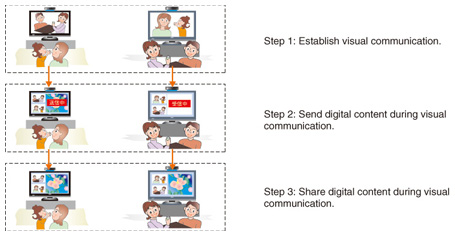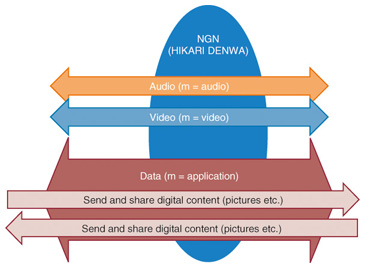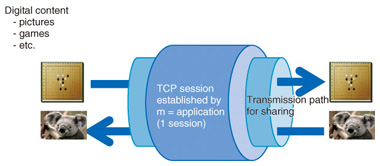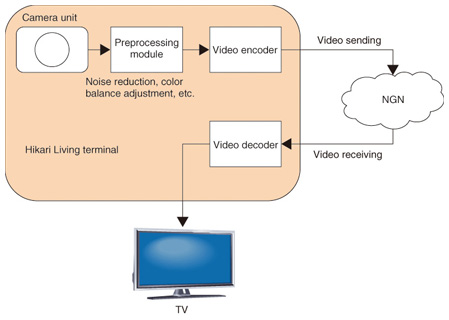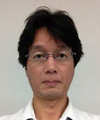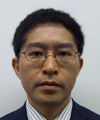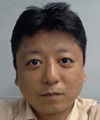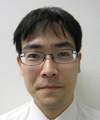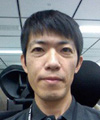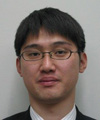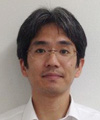 |
|
|
|
|
|
Feature Articles: Developments of the Visual Communication “Hikari Living” Project Vol. 12, No. 2, pp. 37–41, Feb. 2014. https://doi.org/10.53829/ntr201402fa8 Supporting Technologies for Hikari LivingAbstractHikari Living is not only a means for visual communication but also a tool that includes a function for sharing content during visual communication. This tool enables family members separated by distance to visually share content from their living rooms. In this paper, we explain supporting technologies that enable Hikari Living to provide comfortable visual communication. Keywords: content sharing, media tuning, echo canceller 1. IntroductionThe Hikari Living concept includes the following features: - New type of Hikari visual communication via a large television (TV) screen in the living room - Easy and relaxed communication - Shared atmosphere providing a feeling of togetherness These features were achieved by using the four technologies below, which are explained in detail in the subsequent sections. (1) Content sharing technology on the data connect service provided in the Next Generation Network (NGN) Hikari telephone (2) Speech delay reduction technology to minimize speech delay, which is a requirement for fixed telephones (3) Video quality tuning technology to stream high definition video via the NGN Hikari telephone (about 1.8 Mbit/s) (4) Acoustic echo cancellation technology to stably reduce echo in the living environment of general households 2. Content sharing technologyHikari Living enables users to share digital content such as pictures taken with a digital camera during audio communication and visual communication. Steps for sharing pictures while carrying out visual communication are as follows (Fig. 1):
Step 1: The users establish visual communication. Step 2: The sender chooses one photo from a selection of photos and sends the data to the receiver. Step 3: When all of the data has been captured by the receiver, the screens of both the sender and receiver are automatically divided into right and left panes. The left side displays the visual communication image and the right side displays the shared data. As described above, you can share digital content with the person you are speaking to. To realize this function, we used our new Content Sharing During Communication Protocol. This protocol works are shown in Fig. 2. The protocol enables either the caller or callee (receiver) to send digital content. Only two requirements are set for the devices used.
Requirement 1: Both devices must be able to support incoming/outgoing communications (audio or audio/visual) and be capable of sharing digital content from either side. Requirement 2: Both devices must be capable of determining the types of content the other side can process, for example, by previewing it. To confirm that these requirements can be met, this protocol enforces the following rules: Rule 1: Establish transmission path in a TCP (transmission control protocol) session in order to share content multiple times with two-way commands (Fig. 3).
Rule 2: Exchange device capabilities such as what kinds of previewable content will be allowed after the path is established. When we were designing the Content Sharing During Communication Protocol, the protocol design for normal state operation went smoothly, but of course, we also had to consider all abnormal states. Specifically, we considered all situations (especially the collision of processes and collision between manipulation commands from the sender and receiver), in designing the protocol so that it could recover from all eventualities. Consequently, designing the Content Sharing during Communication Protocol was rather a challenge given the complexity and frequency of abnormal states, as opposed to designing completely new services such as Hikari Living. 3. Speech delay reduction technologyIn Hikari Living, the target for one-way speech delay is less than 150 ms. The assumed maximum network delay is 30 ms, so the upper limit of delay for the Hikari Living terminal is 120 ms. Furthermore, because the packet size of the Hikari telephone is 20 ms, 60 ms is required for the transmission of voice packets. This 60 ms comprises 20 ms each for capture delay, playback delay, and synchronization delay. The processing delay in the speech codec and echo canceller is also 20 ms. The remaining delay is 40 ms (= 120 ms – 60 ms – 20 ms). Therefore, it was necessary to implement a jitter buffer and synchronization buffer with delay of less than 40 ms. To achieve a small delay, it is necessary to reduce the buffer size. However, a shorter buffer size makes it easy for sound interruptions to occur as a result of external disturbances, e.g., if the CPU (central processing unit) load is too high. Accordingly, we attempted to determine the minimum buffer size that would not generate sound interruptions under various conditions. By controlling the read and write buffer sizes, we were able to control the accumulated amount of audio data to the minimum buffer size. With this control, the target for the one-way speech delay (less than 150 ms) was achieved. 4. Video quality tuning technologyWe adjusted the configuration of the camera, en-coder, and decoder units to improve video quality, while satisfying not only related standards but also the limitations for both bandwidth and delay time (Fig. 4).
First, the camera and its preprocessing section were tuned in order to capture clear and easily recognizable images under low bitrate conditions. The light-receiving sensitivity of an image sensor in the camera was increased so as to obtain an easily viewable picture under dark conditions. In addition, a function to correct peripheral darkening, which is a typical characteristic of wide lenses, was added. It works by brightening the edges of problematic pictures. Furthermore, we developed a new adaptive noise reduction filter that maintains edge information in order to get a well-modulated picture. Second, we focused on the encoder. For practical use of the limited bandwidth, we changed the rate of bit allocation for each picture because it greatly affects video quality. However, we checked the peak rate and delay time simultaneously because these factors are also affected by it. The last adjustment involved the decoder. Because there is a tradeoff between latency and playout smoothness, we adjusted the buffer size in order to smooth out the network jitter and bit-rate fluctuations. Bit-rate fluctuations are the result of biased bit allocation by the encoder. These tests were repeated under various illumination conditions to ensure stable operation. 5. Acoustic echo cancellation technologyWhen visual communication (or audio communication) is initiated on Hikari Living, you can hear the other person’s voice from the TV’s built-in loudspeakers connected to the Hikari Living terminal, as if you were listening to the sound of a TV program. You can talk to the other person without being aware of the microphone, since the small microphone is built into the Hikari Living camera device set on the TV. Natural hands-free visual communication is achieved even in such audio setup conditions through the implementation of newly developed audio processing functions, i.e., acoustic echo cancellation (AEC), noise reduction (NR) and automatic gain control (AGC), in the Hikari Living terminal (Fig. 5).
Acoustic echo caused by acoustic coupling between the loudspeaker and the microphone seriously disturbs visual communication. Therefore, AEC is necessary to cancel the annoying echo; it works by predicting the echo signal and subtracting the predicted signal from the microphone signal. Digital TVs usually reproduce sound with a relatively long delay after inputting the sound signal to the TV due to the synchronization of the video processing. The length of the delay varies depending on the TV model or manufacturer. The AEC can automatically adapt to the delay differences of most TV models and can subtract the predicted echo in the proper timing so that a TV can be used as-is for Hikari Living. Another problem can occur when the talker is too distant from the microphone on the TV. When the distance between the microphone and the talker increases, the talker’s voice that is picked up is quieter and the background noise is picked up louder. We have addressed this issue by incorporating NR to reduce the background noise and AGC to amplify the talker’s voice with the AEC function. 6. ConclusionHikari Living utilizes many technologies and much knowhow to provide convenience and ease of use to users. Moreover, tuning operations were performed repeatedly to improve convenience and service quality. We believe that Hikari Living has many benefits and will provide a lot of enjoyment to users. |
|









